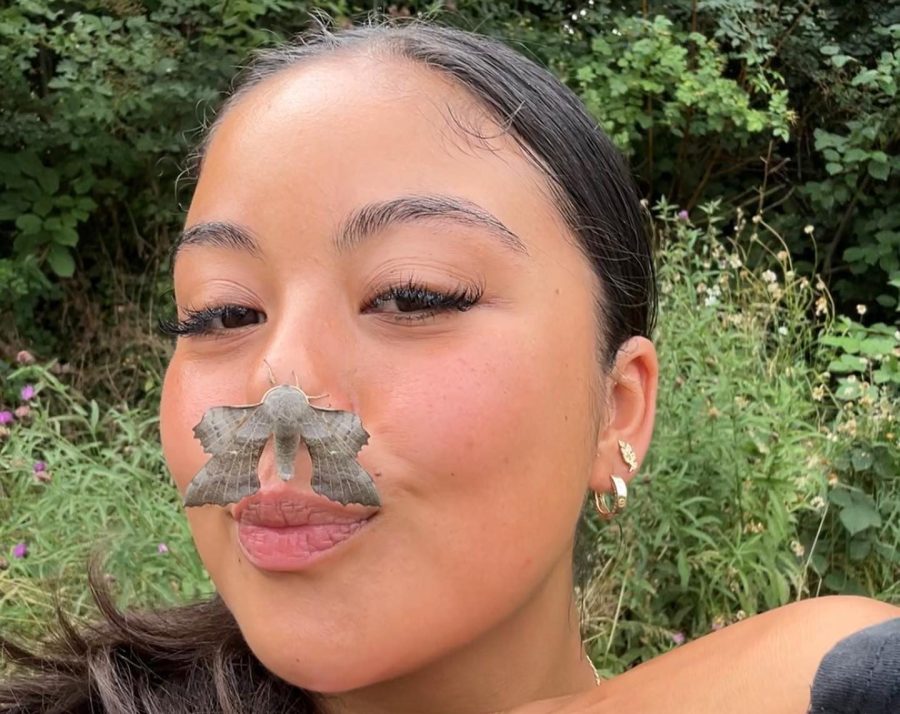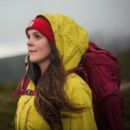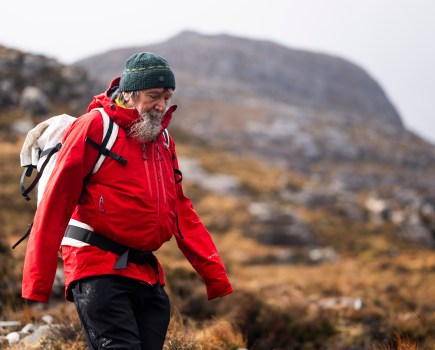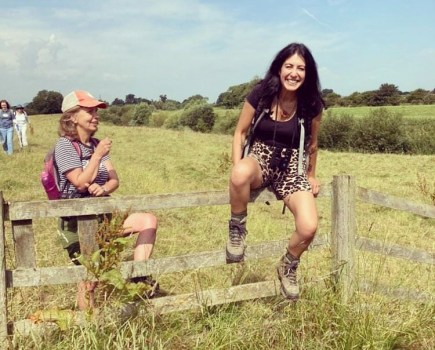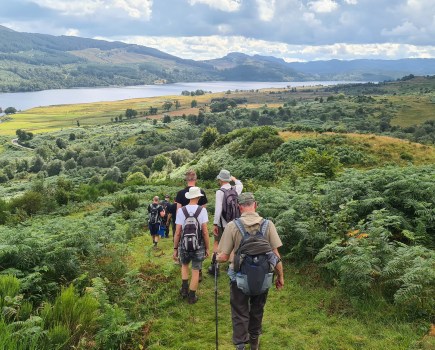Croydon’s David Attenborough – otherwise known as ‘Outside with Lira’ – shares how she overcame countless obstacles into the environmental sector and why nature soothes her soul when tireless conservation work at a time of nature-depleted crisis in this country can feel overwhelming.
Lira Valencia – known on social media as the Urban Wildlife Queen or via her ‘outside with Lira’ handle – was “always curious about nature” despite having little contact with wildlife in the South Croydon flats where she grew up. This didn’t stop her seeking out creepy crawlies. At local parks, other kids enjoyed the swings while she hunted ants. Likewise, in her grandparent’s little urban garden – which “felt like the countryside for a child like me who barely touched grass!” – Lira explored “carefree” and discovered a love of snails. She recalls “that excited tingly feeling when I saw their strange eyes staring back at me!” Lira would mark shells with a dot of her grandma’s nail polish in the hopes she’d spot her favourites again. Without knowing it, she was using an ecological ‘mark-capture-release’ method of measuring population size – a natural scientist.
Main image: Lira and a Poplar Hawk Moth. Credit: Lira Valencia
These early encounters instilled in Lira the “duty to protect living creatures”. Upon discovering birding, her care for the natural world deepened, inspiring Lira to study Zoology. Now 28, she is a London Wildlife Trust Ranger at the Walthamstow Wetlands. But getting to this point professionally wasn’t a walk in the park. Here, Croydon’s David Attenborough answers The Great Outdoors‘ questions on how she overcame countless obstacles into the environmental sector and how nature soothes her soul when her tireless work at a time of nature-depleted crisis in this country can feel overwhelming.
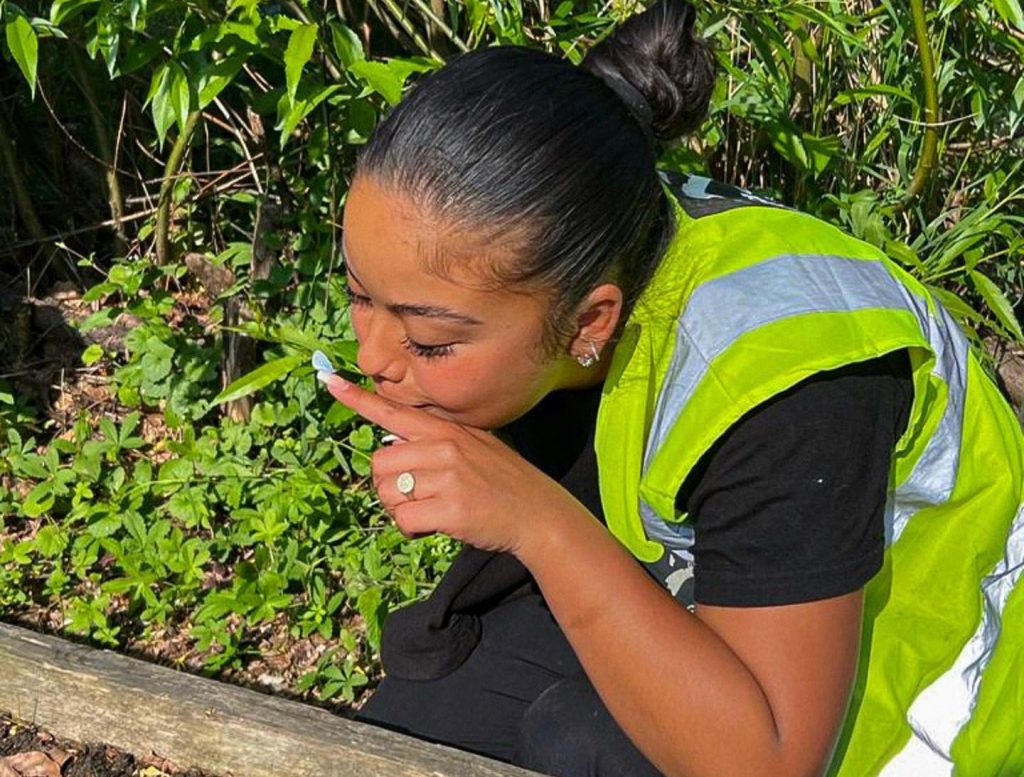
Meeting butterflies. Credit: @outsidewithlira/Instagram
TGO: When did you fall in love with wildlife and nature?
Lira: Despite growing up moving around different estates and with little contact to wildlife, I was always curious about the nature around me. Occasionally, my parents would take me and my brothers to the local park and whilst other kids played on the swings, I would be looking out for ants and other creepy crawlies! For Christmas, my favourite gift to receive was a ‘grow your own Sea Monkeys’ kit which my parents would often gift me. I would spend the next few weeks after Christmas obsessing over the little brine shrimp swimming around, giving me something to look forward to after school. These experiences fuelled this burning curiosity for other living beings which sparked the beginning of my snail-loving stage…
TGO: How did that love develop and diversify into birding and further study of zoology at university?
Lira: Growing up, I didn’t have access to a garden as I lived in flats, so my grandparents back garden was the one place I could explore care-free. Their little urban garden felt like the country-side for a child like me who barely touched grass! With the biggest respect to my grandparents who were super proud of their garden, they had a real snail problem!
Lucky for me, this meant being able to see these creatures up close. I would compare snails in terms of their shell colour and size and would collect empty shells. I would get that excited tingly feeling in my belly when I noticed the eyes of these creatures staring back at me with their strange eyes. My grandma recognised my obsession for snails and made the effort to bond with me over snails. We would bring her bag of nail polishes to the garden and paint empty shells. I would put a dot of paint on my favourite snails, wishing I could find them on my next visit- a similar method done by ecologists called mark-capture-release which measures the population size of a species. I was a natural scientist!
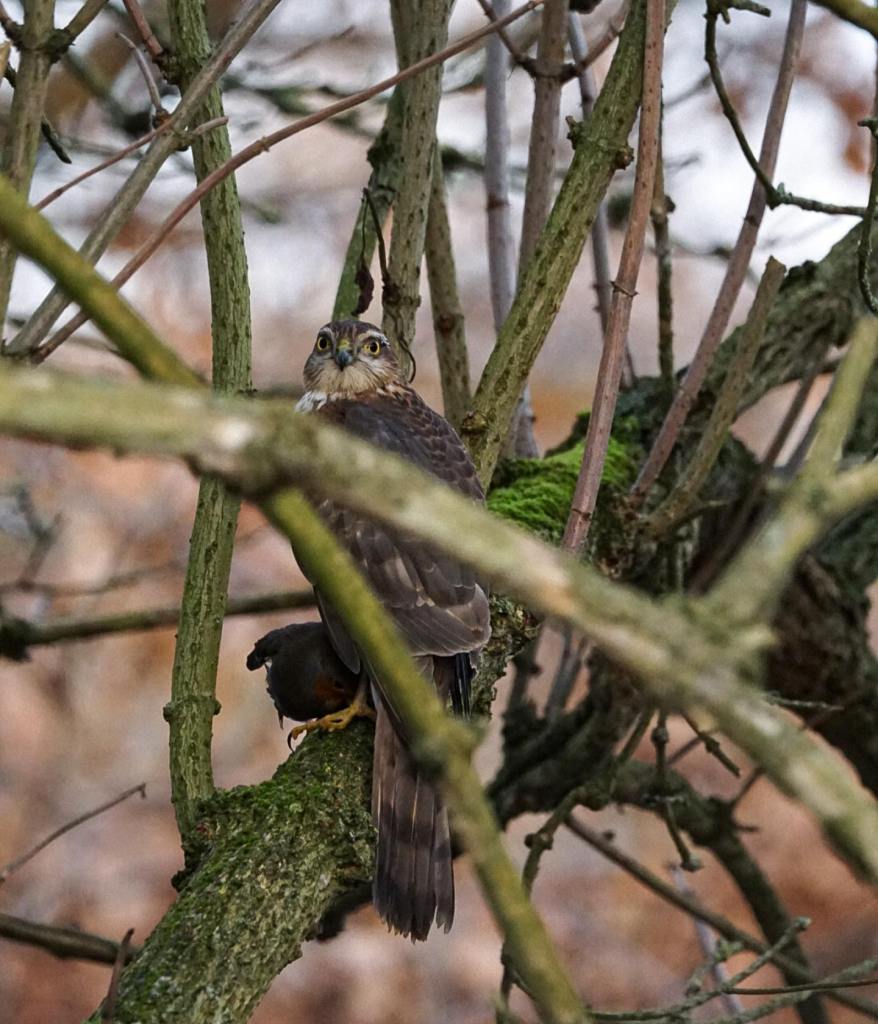
A sparrowhawk swoops into Lira’s camera lens gaze. Credit: @outsidewithlira/Instagram
This is how I met my first ever pet, Patrick the snail, which my parents allowed me to keep in an open plastic container for a short while. It was my first real sense of responsibility and duty to protect something living. It was from these early childhood years where I started to feel a deep care for the natural world. I believe most children have their snail stage (or curiosity in another animal), I just never grew out of mine. As I got older, the curiosity spread to other wildlife and I very slowly found my way to birds in my early twenties when I interned with Birdlife Malta, a bird conservation charity.
TGO: Can you tell us what your average day as a ranger for the London Wildlife Trust looks like?
Lira: Working as a ranger means no two days are the same. I often find it difficult to explain my role as it is super varied and changes with the seasons. In a nutshell, my role has two main aims. The first is to connect people to the wildlife on site and this is done through workshops, talks, walks and events. Most of the events I lead on revolve around birds as birding is the way I connect to nature and love inspiring others to pick it up as a hobby. The second aim is to promote and protect wildlife on site. This is done through surveying and practical conservation work. Nest box surveying and moth trapping are my personal favourites, it’s a chance to get really close to otherwise elusive wildlife. This is how I got a beautiful shot of the fabulously pink Elephant Hawk Moth!

An elephant hawk moth. Credit: @outsidewithlira/Instagram
TGO: Are there any projects you’ve worked on that are close to your heart?
Lira: An experience I hold close to my heart was releasing birds that I had helped rehabilitate when I interned with Birdlife Malta. These birds had been illegally trapped or shot by hunters which is a major conservation concern across the Maltese islands. Most of the birds I released back into the wild are species which are now rare in Malta due to illegal hunting practices, for example, the Stone Curlew which was once resident in Malta. This gave me a real sense of reward and seeing these beautiful birds up close was such a treat!
Other wildlife experience which really stood out to me occurred on the small island of Skomer, a wildlife haven located South of Wales. This island is bird paradise with Puffins and Shearwaters at your feet, Marsh Harriers soaring the skies and Gannets diving into the surrounding waters. I volunteered for three months on Skomer island and during my time there I had the chance to survey seal pups which involved entering caves and marking baby seals with a coloured spray. I had never seen a seal beforehand so it was an absolute treat – spotting a seal in London is not so easy!
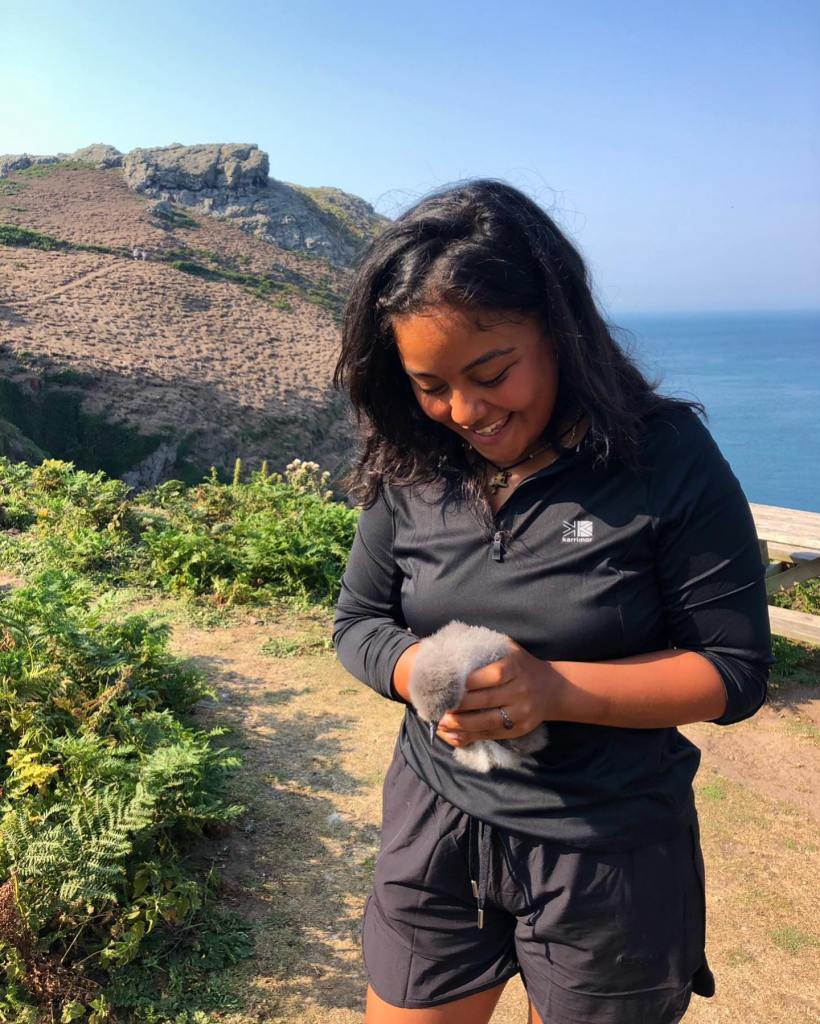
On Skomer. Credit: @outsidewithlira/Instagram
Entering the dark caves and hearing the grunts of the seals felt like something out of a David Attenborough documentary. In fact, during my stay there David Attenborough came to film the Shearwaters for his Wild Isles series and I got to meet him! The Skomer island experience was topped off when the boat taking me back to the main land attracted the attention from a pod of curious dolphins. A pod of around 15 dolphins, including calves, circled our boat, coming right up to the edge to say hello. The warden said it was the first it had ever happened, so I was super lucky to have witnessed it.
TGO: Being a ranger must be a dream job for anyone who is passionate about preserving our natural surroundings – but it seems it’s not been an easy journey and the conservation sector still has barriers for entry. Can you tell us about the steps you had to take and difficulties you had to overcome?
Lira: For an entry level role such as mine, you wouldn’t think it be so difficult to get into – but unfortunately there’s quite a few challenges into getting a ranger role or any other role in the wildlife conservation sector. For me the barriers started with not even being aware of the roles available in the sector. Growing up, no one around me including teachers had no idea of careers paths in the environmental sector. It just wasn’t spoken about. Any student could tell you the steps to becoming a doctor, lawyer, teacher but the role of ranger? What even is that?!
Once I discovered I could work outside, the next challenge was gaining the experience. Most employers request some sort of voluntary wildlife experience and finding this is a city is difficult if you have no connections. It becomes even more complicated when you’re from a low socio-economic background with little financial support. A lot of the time volunteering is not an option. After my Zoology degree, I worked as a cashier at IKEA and ran a small beauty business to save up enough money support my volunteering so I could have something on my CV. It took me two years of saving after university which by this point peers in other sectors have already moved up from their entry level role.
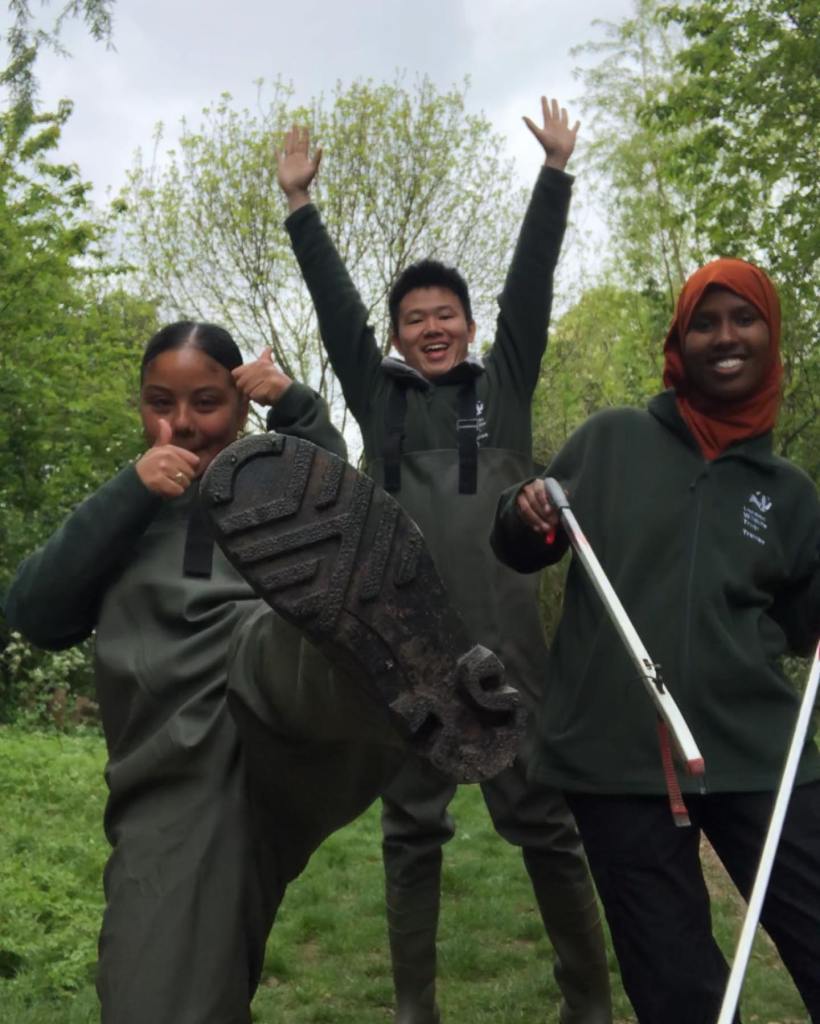
Lira with fellow trainees. Credit: @outsidewithlira/Instagram
During this time, I was also battling with the insecurities of feeling like the environmental sector isn’t for people like myself. Almost everyone I met during beginning of my journey looked and sounded nothing like me. Lack of representation of lower-class urban people made me question if I was aiming for something unachievable. This doubt was the reason I gave up many times and looked into getting a ‘normal’ city job.
The power of social media means it’s now easier to find people who are feeling the same way. On Instagram I came across a birding group for people of colour called FlockTogether. It was the first time I felt part of a community who understood my struggles and feelings of not being represented in something you love. Lastly, a barrier to entering the sector is that there’s not a lot of money in it. You do these sorts of jobs because you care, not for the money. This means that many passionate people end up in other jobs because of the lack of financial opportunity. I have been fortunate to find a niche in social media, using my love for wildlife, which has been able to support the work I do.
TGO: Your work aside, how important is green space to you personally?
Lira: Green spaces are not only important because of my job, but on a personal level too. Nature is the one place I can escape to and that has an almost instant relief of negative feelings. It’s a place where I don’t feel judgment and I can just be. With my overly curious mind, comes a lot of chatter, noise garbage and self-criticism which can only be silenced by the great outdoors. In that’s sense it’s my healer and a companion. I am still trying to understand the healing powers of nature but I think it stems from being the most consistent thing in my life. In world where things are constantly changing, especially in a busy city, nature is somewhere I can always fall back on. No matter what happens in my life, I know I can step outside and see birds, trees and the sky.
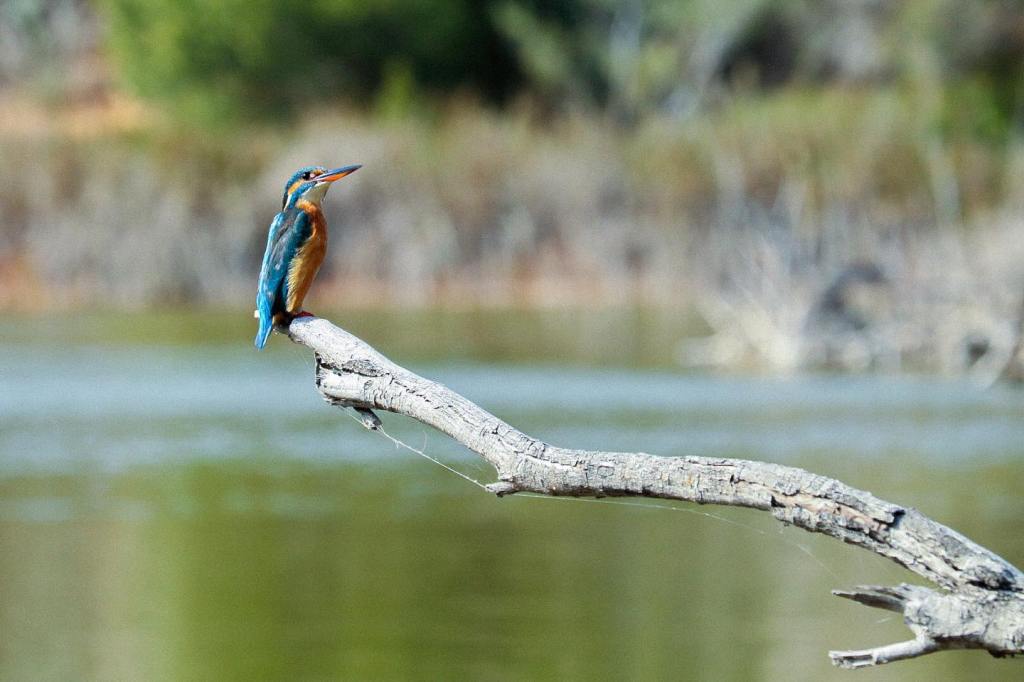
A kingfisher posing. Credit: @outsidewithlira/Instagram
TGO: You use your platform to fight for green space to be made available to all who seek it and to reclaim space for those who have and continue to be marginalised. Can you tell us more?
Lira: As mentioned earlier, lack of representation was a major barrier for me entering the sector as it planted insecurities and seeds of doubt. With my social media, I try to break the narrative of what a nature lover looks and sounds like. Although alone I can’t represent all urban people, it’s a start in bringing a different voice into spaces where it wasn’t heard. I also hope to encourage and inspire others to pursue their passions regardless of the odds. I receive hundreds of messages from people from all walks of life who say that it’s helped seeing someone from the city working with nature as it not something they thought was possible. It just goes to show the importance of representation and lack of resources out there to guide people into the sector.
Last year, I also created an account for a community garden I helped create and run called Soul Food Garden. The founder is a family friend called Marcus, a former farmer and builder from Jamaica. Together we grow an abundance of foods on a patch of green that was once completely neglected. Through this garden, we inspire others to find spaces in their community to get together and grow foods. Creating the garden has brought our community closer and has reduced anti-social behaviour in the area which we want for other neighbourhoods.
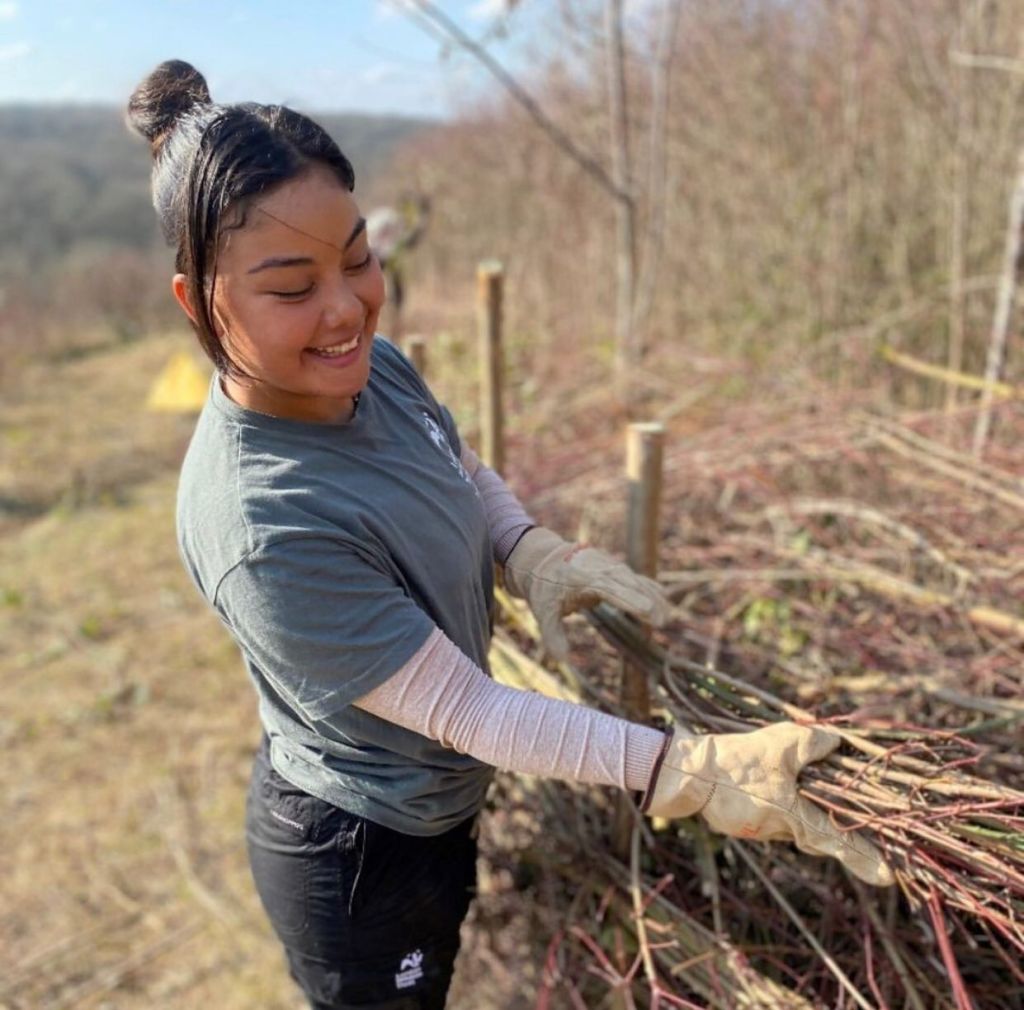
Installing wattle fencing. Credit: @outsidewithlira/Instagram
TGO: Do you have any advice for people who live in a city and crave more nature in their lives?
Lira: There is a big misconception that you need to go really far from the city to experience the peace that nature has to offer. Yes, it can sometimes be a challenge to find a place where sirens and trains can’t be heard, but it is possible. I have had some of my most peaceful and wholesome moments in urban parks, where it feels like you are anywhere but the city.
If you live in a city and want to escape to nature, I would search for local nature reserves and find the point furthest from the road to site. I live close to a common and have found a spot on a hill where I can completely disconnect. The road is still in sight unfortunately, but the noise of city is reduced to a light hum. I just look away from the road, across the hills and disconnect for a while. I look around and try to spot birds. Sometimes I see just a pigeon and that’s alright because I’m just happy to be outdoors.
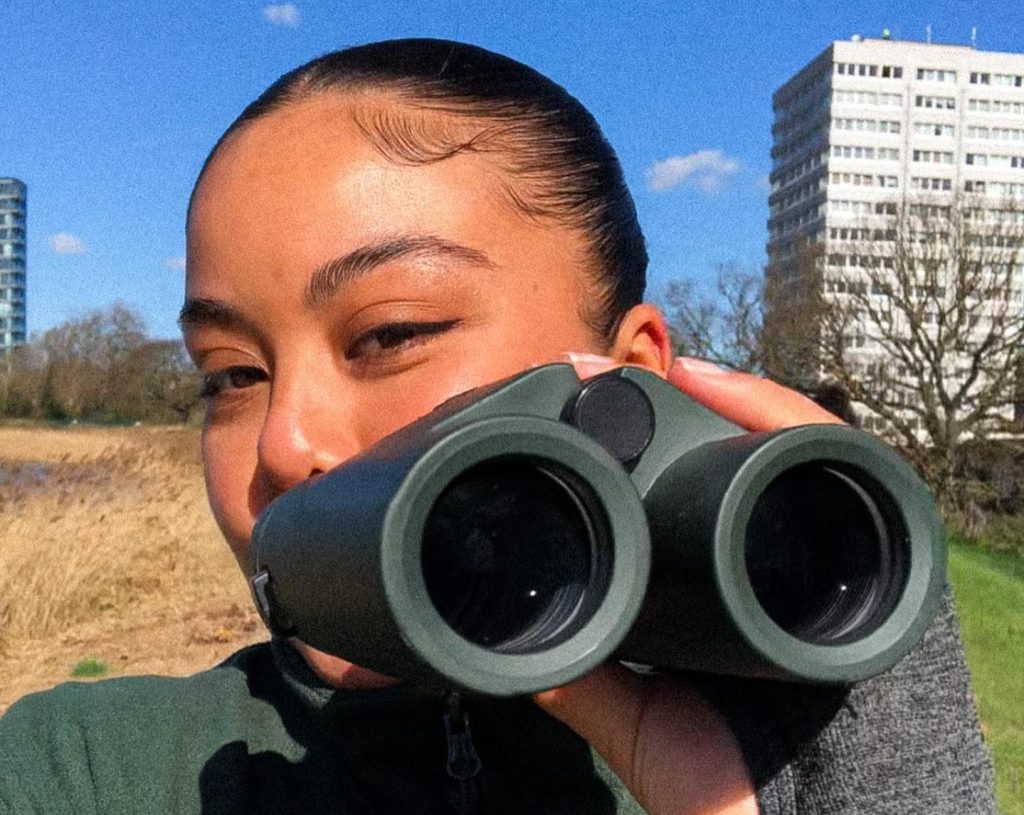
Birdwatching in the city. Credit: @outsidewithlira/Instagram
Funnily enough, like most people, I find it difficult to find time to explore nature outside of work. When you’re tired and it’s cold, going to the park can be the last thing you want to do. This means, for city-dwellers, going without seeing nature for long periods of time which can have negative effects on the mind. I always urge people to notice the small things around them regardless of where they are. If you are on a train to work, look outside the window. If you are walking down the street, notice the wild flowers persevering through the concrete. Look up every now and then, you will be surprised what’s flying above us sometimes. These little moments with nature can make such a change in the long run as someone living around concrete.
TGO: Protecting our depleted levels of nature in Britain is a big job that can feel overwhelming. How do you stay motivated in the face of quite a bleak prognosis for nature?
Lira: A lot of my motivation for protecting wildlife stems from knowing how much humans depend on a healthy ecosystem for our own survival. Although there has been more hype about the ecological collapses and natural disasters, there still is a lack of care and interest in the natural world amongst most people. It’s just not what’s important to people right now. A person who is dealing with a lot of pressures of life may not have the privilege to care about the loss of a bird species they’ve never heard of. This is why I think its super important as a society to ensure children are taught the importance of nature, how intricate it is and how we are a part of it. This way, children will grow up to be adults and leaders who respect their environment and will make decisions with nature in mind.
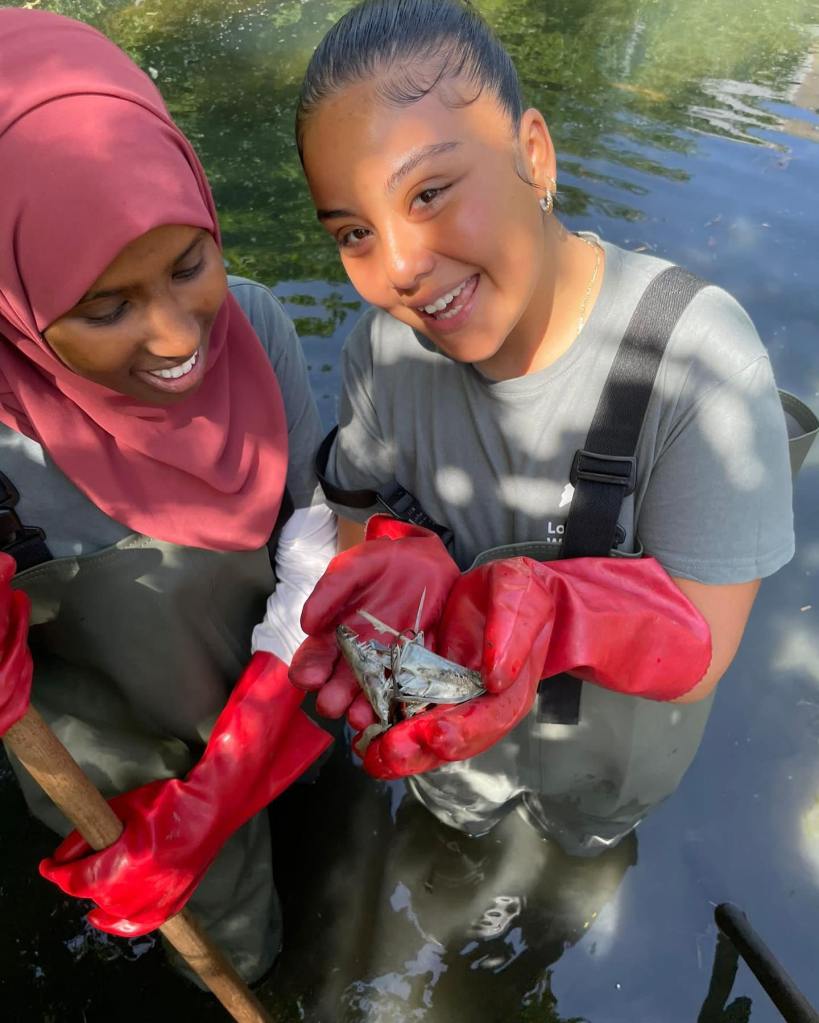
Clearing rubbish from a river – “smelly but exciting”! Credit: @outsidewithlira/Instagram
It’s easy to get frustrated when there is constant bad environmental news and it seems like all the work you do is for nothing. I would be lying if I said I always have hope. It’s important to allow yourself to feel sad, anxious and angry, otherwise you end up burning out which is something I’m still learning to manage. Another thing that helps me push through is realising that the most effective way to help our flora and fauna friends is to act locally. Small local actions have a positive impact on the environment and is something achievable where ever you live.
This is where community and nature meet. Doing positive things for your local environment often brings people together which can help with those feelings of hopelessness and can build a sense of unity with others around you. Creating a better environment for you and your neighbours, where nature is thriving, is a step towards a better world.
Follow Lira’s adventures on Instagram and TikTok @outsidewithlira.

